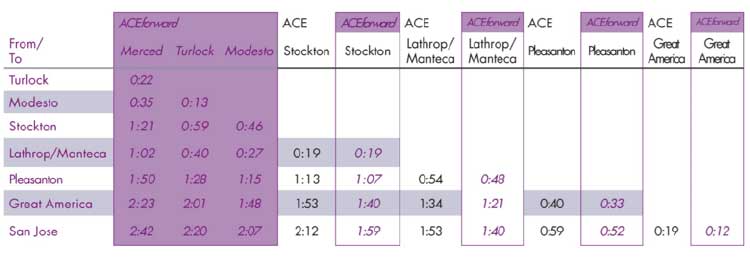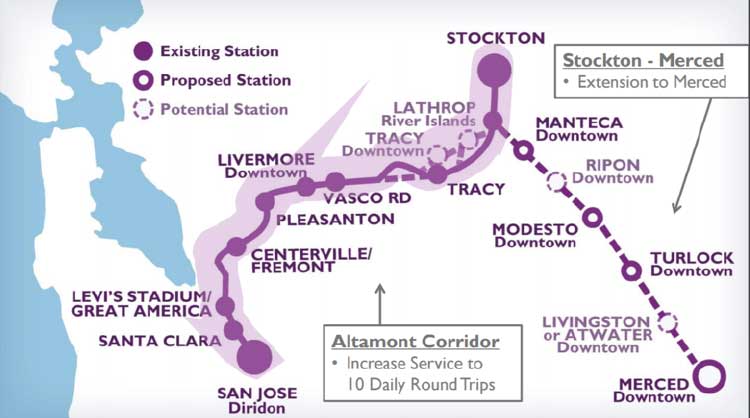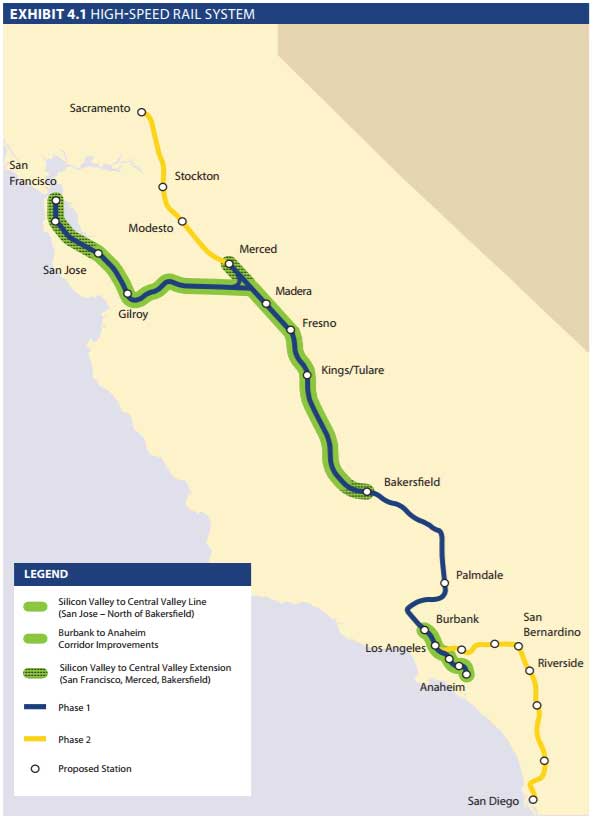Governor Brown’s ten year, $52 billion gas tax deal could prove transformative for the state’s transportation system if used effectively, but commitments are already being made toward poorly-conceived projects. The Altamont Commuter Express (ACE) Merced extension, which received a $400 million earmark after last minute negotiations by Senator Anthony Cannella (R-Ceres) and Assemblyman Adam Gray (D-Merced), is one such boondoogle. While ACE provides a valuable service and offers significant potential for growth, the Merced extension will serve very few riders and makes little sense in the context of California’s high speed rail priorities.
ACE service between the Central Valley and Silicon Valley is poised for modernization and expansion over the coming decade as a part of the ACE Forward project. After the Pacheco Pass was chosen over the Altamont Pass for high speed rail service, the California High Speed Rail Authority (CAHSRA) intended to move forward with a high speed rail-lite service across Altamont; however, in light of funding constraints, this project was scaled back to focus on more achievable improvements to ACE service. ACE currently operates four round trips per day between Stockton and San Jose, serving about 5,000 riders a day. ACE Forward would provide phased near-term upgrades, including a branch extension to Modesto, infrastructure improvements, and increasing service to ten round trips per day. An extension to Merced via Ceres, Turlock, and Atwater/Livingston was included as a future phase, but seemed unlikely until Senator Cannella and Assemblyman Gray negotiated an earmark for the project.

Projected ACE Forward travel times compared to current ACE travel times. A Merced to San Jose service would take 2 hours and 42 minutes. (Source: ACE)
Unfortunately, Senator Cannella and Assemblyman Gray picked the wrong project to earmark. The Merced extension’s low ridership (1,200 boardings per day) and slow travel times (2 hours and 42 minutes) makes it difficult to justify a $400 million investment. The decision is particularly strange in the context of the CAHSRA’s 2016 Business Plan, which prioritizes construction of a San Jose to Central Valley connection by 2025. High speed rail service would enable a Merced to San Jose connection in under 60 minutes – one third of the travel time of ACE. Moreover, upon completion of service to Southern California by 2029, it would actually be faster to ride high speed rail from Merced to Los Angeles (2 hours and 27 minutes) than from Merced to San Jose via ACE.
Investments in ACE certainly make sense on an interregional scale to connect the northern San Joaquin Valley (Stockton/Modesto) with the Bay Area: near-term service improvements and long-term high speed rail investments are warranted. However, a more effective investment for Merced would prioritize San Jose to Merced high speed rail connection over the ACE Merced extension, in alignment with statewide goals. It’s unfortunate that scarce transportation funds will be earmarked for an ineffective transportation project because legislators failed to see the bigger picture.





 AI-search
AI-search  Email
Email